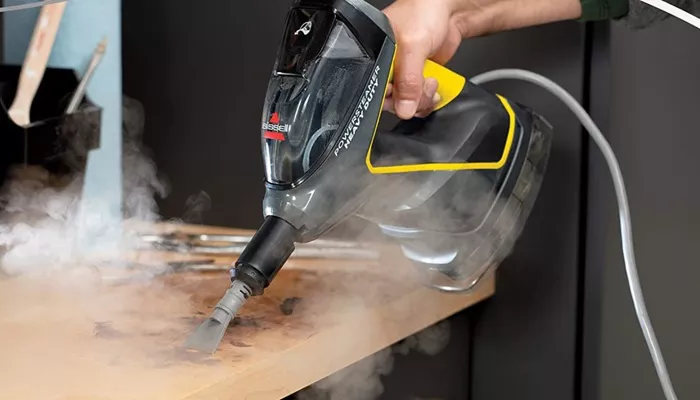Windows play a crucial role in a building’s aesthetics, allowing natural light to flood in and offering views of the outside world. However, over time, they can become dirty, covered in grime, dust, pollen, and even bird droppings. Keeping windows clean is essential for maintaining a clear view and enhancing the overall look of a property. One method that might come to mind for efficient window cleaning is power washing. But is it a good idea to power wash windows? This seemingly straightforward question has several aspects to consider, from the type of windows you have to the potential risks involved. In this article, we’ll explore the ins and outs of using a power washer on windows, helping you make an informed decision.
Understanding Power Washers
Power washers, also known as pressure washers, are powerful cleaning tools. They operate by using a pump to increase the pressure of water and then force it out through a nozzle at high speed. This high – pressure stream of water can be extremely effective at removing dirt, grime, and stains from various surfaces. There are different types of power washers available on the market. Electric power washers are popular for home use. They are generally quieter, easier to start, and more energy – efficient. They draw power from a standard electrical outlet, which limits their mobility somewhat but makes them convenient for use around the house. Gas – powered power washers, on the other hand, are more powerful and offer greater mobility. They are suitable for larger – scale or more heavy – duty cleaning tasks, such as cleaning commercial buildings or industrial equipment. However, they produce emissions and are louder than electric models.
The pressure output of a power washer is measured in PSI (Pounds per Square Inch). Different models can produce a wide range of pressures, from relatively low – pressure units suitable for gentle cleaning to high – pressure models that can cut through thick layers of grime. When it comes to window cleaning, the appropriate pressure level is crucial. Using too high a pressure can cause damage to the windows, while too low a pressure may not effectively remove the dirt.
The Appeal of Power Washing Windows
Quick and Efficient Cleaning
One of the main attractions of power washing windows is the speed at which it can clean. A high – pressure stream of water can quickly dislodge and wash away dirt, dust, and other contaminants that have accumulated on the window surface. This is especially useful for large windows or multiple windows in a building. For example, if you have a multi – story building with numerous windows, power washing can significantly reduce the time it takes to clean them compared to traditional hand – cleaning methods. The high – pressure water can reach areas that are difficult to access with a sponge or cloth, such as high – up windows or those in hard – to – reach corners.
Thorough Cleaning
Power washing can provide a more thorough clean compared to some other methods. The force of the water can penetrate into small crevices and corners around the window frame, removing dirt and debris that might be missed by hand – cleaning. It can also effectively remove stubborn stains, such as those caused by hard – water deposits or long – term exposure to environmental pollutants. This not only makes the windows look cleaner but also helps to prevent the build – up of dirt that could potentially cause damage to the window over time.
Alternatives to Power Washing Windows
Hand Washing
Hand washing is a traditional and reliable method of cleaning windows. It involves using a bucket of soapy water, a sponge or wash mitt, and a squeegee for drying. Hand washing allows you to have more control over the cleaning process and reduces the risk of damage to the windows. However, it can be more time – consuming and may not be as effective at removing stubborn dirt and grime as power washing. To hand wash your windows effectively, start by rinsing the windows with a hose to remove loose dirt. Then, soak the sponge or wash mitt in the soapy water and gently scrub the window surface, working in small sections. Rinse each section thoroughly with the hose before moving on to the next one. Finish by using the squeegee to dry the windows, starting from the top and working your way down.
Using a Window Cleaning Kit
There are also window cleaning kits available on the market that are designed to make the window cleaning process easier. These kits typically include a long – handled brush, a squeegee, and a cleaning solution. The long – handled brush allows you to reach high windows without the need for a ladder, and the squeegee helps to dry the windows quickly and streak – free. Window cleaning kits are a good option for those who want a convenient and effective way to clean their windows without the use of a power washer.
Conclusion
Power washing windows can be an effective way to clean them quickly and thoroughly, but it comes with potential risks. By understanding these risks, taking the necessary precautions, and following the proper procedures, you can power wash your windows safely. However, if you’re unsure or if your windows have sensitive surfaces or special coatings, it may be best to consider alternative cleaning methods such as hand washing or using a window cleaning kit. Ultimately, the goal is to keep your windows clean and in good condition while protecting their glass, frames, and seals. Whether you choose to power wash your windows or use another method, regular cleaning is an important part of window maintenance that can help to keep your windows looking their best and functioning properly.
Related topics:
What is a Dual Action Vacuum Cleaner?

